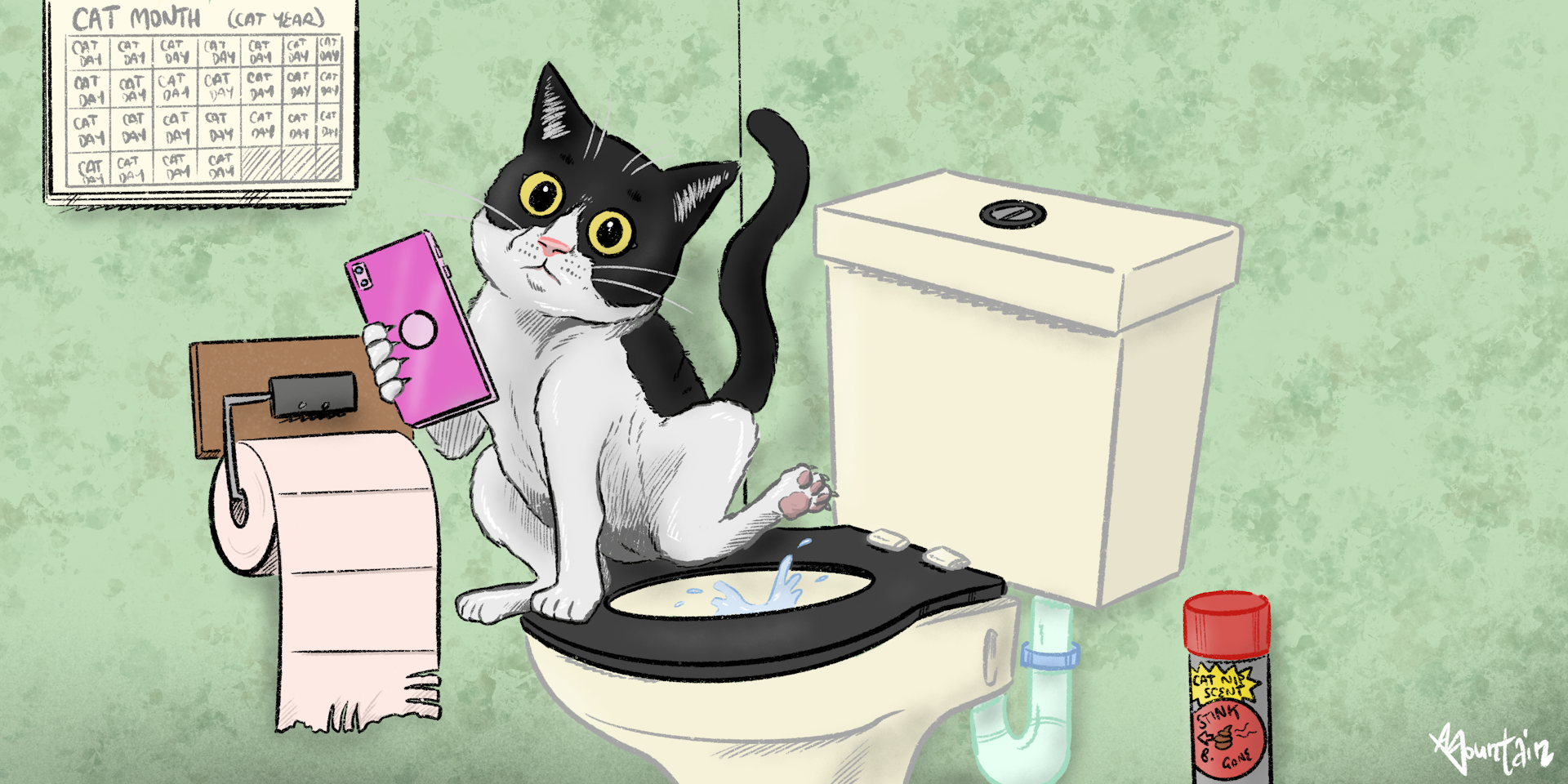Potential Risks of Flushing Cat Poop Down Your Toilet - Tips for Better Handling
Potential Risks of Flushing Cat Poop Down Your Toilet - Tips for Better Handling
Blog Article
Were you trying to find resources Don’t flush cat feces down the toilet?

Introduction
As feline owners, it's vital to bear in mind just how we take care of our feline pals' waste. While it may seem hassle-free to purge cat poop down the commode, this method can have destructive repercussions for both the atmosphere and human health.
Alternatives to Flushing
Fortunately, there are more secure and a lot more accountable methods to deal with feline poop. Consider the following choices:
1. Scoop and Dispose in Trash
One of the most typical approach of getting rid of cat poop is to scoop it into a naturally degradable bag and throw it in the garbage. Make sure to use a devoted litter inside story and throw away the waste without delay.
2. Usage Biodegradable Litter
Select naturally degradable pet cat litter made from products such as corn or wheat. These clutters are eco-friendly and can be securely disposed of in the trash.
3. Bury in the Yard
If you have a yard, take into consideration hiding feline waste in a designated area away from vegetable yards and water sources. Make sure to dig deep enough to avoid contamination of groundwater.
4. Mount a Pet Waste Disposal System
Purchase a pet garbage disposal system specifically created for cat waste. These systems utilize enzymes to break down the waste, reducing odor and environmental impact.
Health Risks
In addition to environmental problems, purging feline waste can also posture health risks to people. Cat feces might include Toxoplasma gondii, a parasite that can cause toxoplasmosis-- a possibly severe health problem, particularly for expectant females and people with damaged immune systems.
Environmental Impact
Purging cat poop presents hazardous virus and bloodsuckers right into the supply of water, presenting a considerable danger to aquatic communities. These impurities can adversely influence marine life and concession water top quality.
Conclusion
Responsible pet possession expands past supplying food and shelter-- it also involves proper waste management. By avoiding flushing cat poop down the bathroom and choosing alternative disposal approaches, we can lessen our environmental footprint and safeguard human wellness.
Why Can’t I Flush Cat Poop?
It Spreads a Parasite
Cats are frequently infected with a parasite called toxoplasma gondii. The parasite causes an infection called toxoplasmosis. It is usually harmless to cats. The parasite only uses cat poop as a host for its eggs. Otherwise, the cat’s immune system usually keeps the infection at low enough levels to maintain its own health. But it does not stop the develop of eggs. These eggs are tiny and surprisingly tough. They may survive for a year before they begin to grow. But that’s the problem.
Our wastewater system is not designed to deal with toxoplasmosis eggs. Instead, most eggs will flush from your toilet into sewers and wastewater management plants. After the sewage is treated for many other harmful things in it, it is typically released into local rivers, lakes, or oceans. Here, the toxoplasmosis eggs can find new hosts, including starfish, crabs, otters, and many other wildlife. For many, this is a significant risk to their health. Toxoplasmosis can also end up infecting water sources that are important for agriculture, which means our deer, pigs, and sheep can get infected too.
Is There Risk to Humans?
There can be a risk to human life from flushing cat poop down the toilet. If you do so, the parasites from your cat’s poop can end up in shellfish, game animals, or livestock. If this meat is then served raw or undercooked, the people who eat it can get sick.
In fact, according to the CDC, 40 million people in the United States are infected with toxoplasma gondii. They get it from exposure to infected seafood, or from some kind of cat poop contamination, like drinking from a stream that is contaminated or touching anything that has come into contact with cat poop. That includes just cleaning a cat litter box.
Most people who get infected with these parasites will not develop any symptoms. However, for pregnant women or for those with compromised immune systems, the parasite can cause severe health problems.
How to Handle Cat Poop
The best way to handle cat poop is actually to clean the box more often. The eggs that the parasite sheds will not become active until one to five days after the cat poops. That means that if you clean daily, you’re much less likely to come into direct contact with infectious eggs.
That said, always dispose of cat poop in the garbage and not down the toilet. Wash your hands before and after you clean the litter box, and bring the bag of poop right outside to your garbage bins.
https://trenchlesssolutionsusa.com/why-cant-i-flush-cat-poop/

I ran across that review about Can You Flush Cat Poo or Litter Down the Toilet? when doing a lookup on the search engines. Sharing is nice. Helping others is fun. Many thanks for your time. Come back soon.
Get Quote Now Report this page